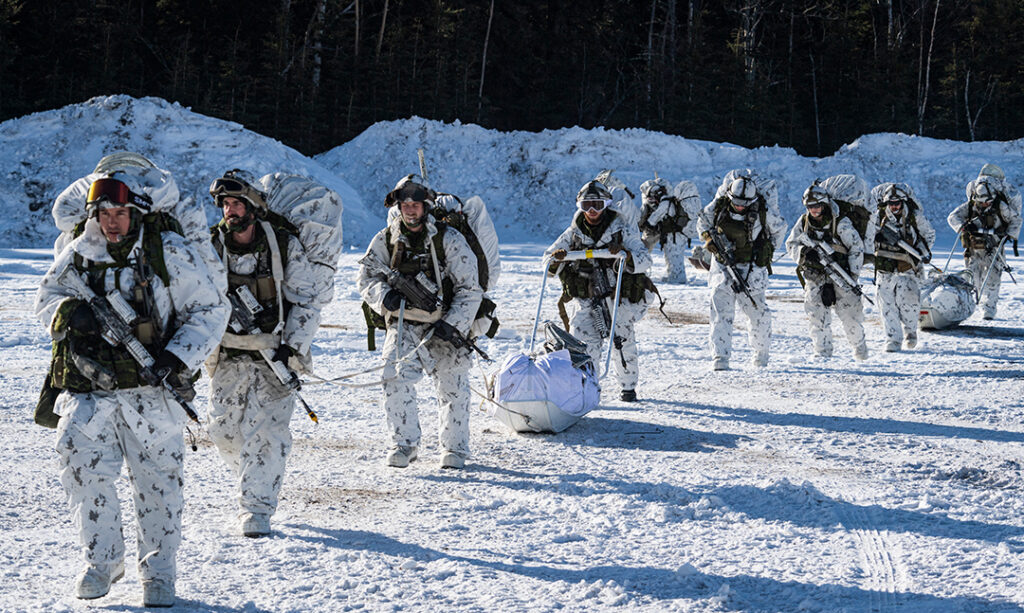THE WATCH STAFF
The U.S. Army’s new 11th Airborne Division is strategically positioned to counter threats from potential foes Russia and the People’s Republic of China (PRC) after its June 6, 2022, activation at Joint Base Elmendorf-Richardson (JBER) in Anchorage, Alaska.
“You have an operational headquarters that could … [fight] across the Indo-Pacific,” incoming division commander Maj. Gen. Brian Eifler, commander of U.S. Army Alaska, told the Army Times newspaper, adding that the unit’s capabilities and expertise enable it to fight across Arctic nations as well.
The new division is under control of U.S. Army Pacific and U.S. Indo-Pacific Command. The 25th Infantry Division’s 4th Infantry Brigade Combat Team, also stationed at JBER, will remain airborne and become the 11th Airborne Division’s 2nd Infantry Brigade Combat Team. Additionally, the 1st Brigade, 25th Infantry Division, will remain at Fort Wainwright, in interior Alaska, to become the division’s 1st Infantry Brigade Combat Team — though the brigade might shed its Stryker unit.
Although a final decision hasn’t been made about the Strykers, which do not work reliably in extreme cold, Army Secretary Christine Wormuth told lawmakers in May 2022 that converting from a Stryker brigade to a light infantry force could free up end-strength. Those personnel slots could then be used to transition Army Alaska’s headquarters into an operational division headquarters.
The changes come as the Army evaluates its overall Arctic readiness. “We’re looking at the Arctic very differently,” Army Chief of Staff Gen. James C. McConville told the Senate Armed Services Committee in May 2022. “We’ve got to be able to operate in that environment. We have to make sure the units have the capabilities, and that gives them the confidence to be special. They have the right vehicles to operate in the coldest climate. They have the right equipment and the right clothing. All those things come together to give them a sense of identity.”
Some of strategies surrounding the new airborne division evolved from the Joint Pacific Multinational Readiness Center rotation in March 2022 at Fort Greely, Alaska. Among them, to hold future brigade-level trainings in the northern state to maintain readiness.
Previous exercises at the National Training Center at Fort Irwin, California, and the Joint Readiness Training Center at Fort Polk, Louisiana, would “[take] our forces and its equipment out for basically several months” due to shipping time and travel, Eifler said. (Pictured: Canadian Soldiers provide security after disembarking a CH-47 Chinook at Fort Greely, Alaska, during Exercise Joint Pacific Multinational Readiness Center on March 16, 2022.)
The new arrangement, he said, “helps everybody in INDOPACOM to keep our forces … in the region and ready, because we know there are adversaries out there that might be making decisions and doing things that we have to be ready for.”
The training also spotlighted potential cold-weather lapses, including that the Strykers’ vehicles can become “cold-soaked” if parked in the open for prolonged periods. This can make maintenance and repairs nearly impossible, requiring mechanics to thaw the large vehicles before tackling mechanical issues. Potential problems with specialized tents, boots and skis also were reported.
Eifler said he hopes the Army’s Arctic strategy, lessons from the training exercise and influence of the new division headquarters combine to address these and other challenges. “We really used this [training rotation] to start trying to figure out what we need, equipment wise, where our gaps are,” Eifler said. “Some of the stuff we have doesn’t necessarily function well at those severe temperatures. So, we’re trying to help educate the Army so they can resource us properly.”
IMAGE CREDIT: MASTER SAILOR DAN BARD: CANADIAN ARMED FORCES

